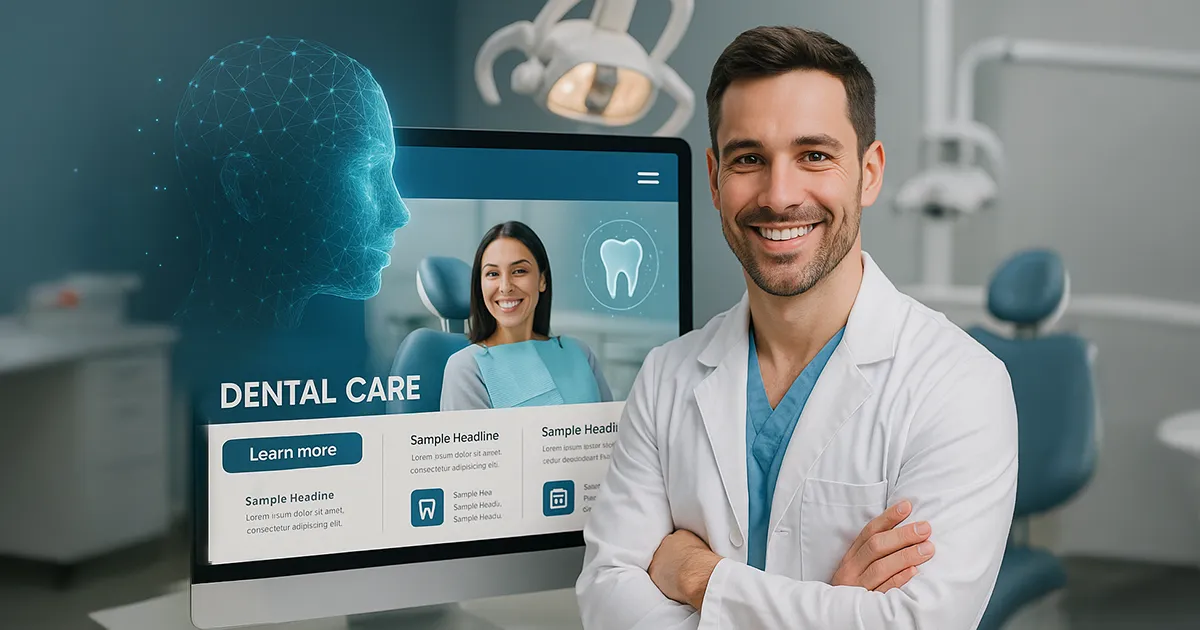In today’s digital-first world, dental website design isn’t just about creating a beautiful site—it’s about converting visitors into patients, enhancing credibility, and staying competitive. With patients increasingly researching dental practices online before making an appointment, a professional and user-friendly website is essential.
This article explores in detail the key elements of dental website design, the impact on SEO and patient acquisition, and how to partner with experts like TrillSites.com to build a high-performing website.
Why Dental Website Design Matters
A well-designed dental website is the digital front door to your practice. It reflects your professionalism, builds trust, and provides essential information to current and prospective patients. Without a modern, optimized site, you risk losing business to competitors with a stronger online presence.
Key Benefits of Great Dental Website Design:
- Enhanced user experience (UX).
- Better search engine rankings (SEO).
- Improved patient trust and brand credibility.
- Higher conversion rates and appointment bookings.
- Mobile responsiveness for on-the-go users.
✅ Want to build a patient-converting dental website? Explore our services
Essential Features Every Dental Website Must Include
When designing a dental website, specific features must be prioritized to ensure performance, usability, and compliance with healthcare regulations.
1. Mobile-Responsive Design
More than 70% of users access websites via mobile devices. Your site must adapt seamlessly to all screen sizes.
2. Fast Load Speed
Website speed influences both user experience and Google rankings. Dental sites should load within 2-3 seconds.
3. Clear Navigation
Patients should easily find services, contact info, insurance details, and booking options without getting frustrated.
4. SEO Optimization
Use relevant keywords like “dental services near me” and “family dentist in [location]” along with structured headings.
5. Patient Forms and Booking Options
Online appointment scheduling, downloadable forms, and secure patient portals are must-haves.
SEO and Dental Website Design: A Perfect Match
Search Engine Optimization (SEO) is critical for dentists who want to appear on the first page of Google. Here’s how dental website design directly influences SEO performance:
- Schema markup for medical organizations helps Google understand your content better.
- Local SEO techniques include an optimized Google Business Profile and localized content.
On-page SEO elements such as header tags, image alt-texts, and keyword integration.
✅ Boost your rankings with expert help. Check out our dental marketing services
Branding and Visual Identity in Dental Website Design
The colors, logo, fonts, and layout of your dental website should align with your practice’s branding. A cohesive visual identity increases brand recognition and conveys professionalism.
- Colors: Blue for trust, green for health, and white for cleanliness are commonly used.
- Imagery: Use real photos of your team, facilities, and patients (with consent).
- Typography: Clean, readable fonts like Lato, Open Sans, or Roboto are preferred.
Common Mistakes to Avoid in Dental Website Design
- Cluttered layouts that confuse users.
- No SSL certificate, which reduces trust.
- Neglecting mobile optimization.
- Poor call-to-actions (CTAs) that don’t direct user behavior.
- Ignoring ADA compliance puts your practice at legal risk.
✅ Stay updated with the latest web trends. Visit our blog
Working with TrillSites.com for Your Dental Website Design
Partnering with an expert team like TrillSites.com ensures that your dental website is optimized for both aesthetics and performance. TrillSites.com specializes in dental website design, SEO, marketing, and HIPAA-compliant development.
Their approach includes:
- Customized site design.
- Conversion-focused layouts.
- Advanced SEO implementation.
- Full integration with scheduling and CRM tools.
✅ Have questions or need a quote? Contact us today
Frequently Asked Questions (FAQs)
Why is dental website design important for my practice?
A modern website builds credibility, improves patient acquisition, and enhances online visibility.
How much does a dental website typically cost?
Costs vary depending on features and complexity. Professional design ranges from $2,000 to $10,000+.
Can I manage my website content after it’s built?
Yes. Most dental websites are built on content management systems (CMS) like WordPress, making updates easy.
How do I improve my site’s SEO?
Use keyword-optimized content, create location pages, build backlinks, and update your Google Business Profile.
How long does it take to build a dental website?
A basic site may take 4–6 weeks. Complex sites with custom integrations may take longer.
Conclusion
Dental website design is a powerful tool that can transform how patients perceive and interact with your practice. With the right strategy, your site can serve as a 24/7 marketing tool that builds trust, attracts new patients, and supports your growth goals.
To truly succeed online, dental practices need more than just a pretty design—they need strategy, optimization, and expert execution.
References
- American Dental Association. (2024). Digital Marketing and Website Compliance for Dental Practices. Retrieved from https://www.ada.org
- HealthIT.gov. (2023). Understanding HIPAA for Health Websites. Retrieved from https://www.healthit.gov
- Moz. (2024). SEO Best Practices for Local Businesses. Retrieved from https://moz.com
- Nielsen Norman Group. (2023). UX Design in Healthcare. Retrieved from https://www.nngroup.com

